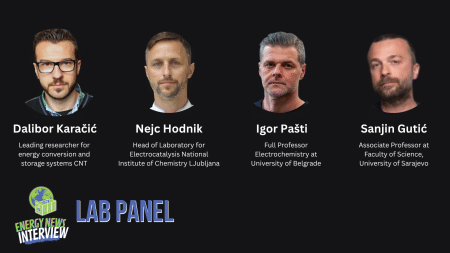The investigation into microgrid frequency regulation has taken an innovative turn with the integration of Vehicle-to-Grid (V2G) technology, particularly focusing on the role of battery and fuel cell electric vehicles. Current statistics indicate that the global market for microgrids is projected to grow at a compound annual growth rate (CAGR) of 10.6% from 2021 to 2026, reflecting a heightened global emphasis on energy resilience and sustainability. This creates a crucial junction for integrating technological solutions like V2G within microgrids.
At the core of this exploration lies the problem of grid stability when integrating renewable energy sources. While renewables present clear environmental advantages, their variable and intermittent nature poses significant challenges to grid stability, particularly in microgrids characterized by low inertia. A key aspect of maintaining grid stability is frequency regulation, and this is precisely where V2G technology’s potential becomes evident. By leveraging the storage capabilities of battery electric vehicles (BEVs) and the rapid response of fuel cell vehicles (FCVs) equipped with reversible fuel cells, microgrids could better balance fluctuations in renewable energy output.
Numerical simulations demonstrate that vehicle-to-grid technologies significantly enhance frequency regulation, as BEVs spend much of their time parked and thus available for energy exchange with the grid. Furthermore, advancements in smart grid technologies have facilitated more reliable communication between electric vehicles and grid operators, streamlining the process of energy redistribution. The proliferation of BEVs, expected to reach significant adoption rates as suggested by a projected global stock of approximately 300 million units by 2040, amplifies the potential impact of V2G. This growth aligns with a parallel increase in the available storage capacity that can be used to stabilize grid frequency, marking BEVs as a promising candidate for supporting microgrid resilience.
However, the practical implementation of V2G technology hinges on several strategic considerations. Firstly, the balance between the integration of BEVs and FCVs must be carefully managed to achieve optimal microgrid performance. Numerical models have shown that while BEVs are efficient for grid connection and immediate response to frequency deviations, FCVs can provide substantial support through hydrogen production, contributing to the power balance.
Furthermore, economic incentives play a pivotal role. By enticing both vehicle owners and grid operators, V2G solutions could create a mutually beneficial network. For instance, the economic rewards for transferring energy back to the grid could encourage more vehicle owners to participate in V2G schemes, whereas grid operators benefit from enhanced stability and reduced need for extensive energy storage infrastructure.
The efficacy of V2G in frequency regulation is underscored by studies like the one conducted by Jadhav et al. Their research confirmed that a higher penetration of BEVs contributes significantly to frequency stability around the benchmark of 50 Hz, presenting a compelling case for their increased integration into microgrids. These studies consistently indicate that BEVs, particularly when integrated at high densities, can maintain stability in electricity supply through their quick responsiveness to load changes.
In this evolving landscape, the integration of V2G technology within microgrids unfolds a pathway toward more sustainable and resilient energy systems. As adoption rates for electric vehicles continue to accelerate, the potential for these systems to contribute to frequency regulation only grows more promising. Looking forward, as BEVs and FCVs further penetrate the market, the symbiotic relationship between V2G technology and microgrid stability will likely become a staple of contemporary energy solutions, representing a critical turning point in managing sustainable energy systems. The ability of these vehicles to respond dynamically to changes in grid demand renders them not just transport tools, but pivotal players in the global energy transition.








